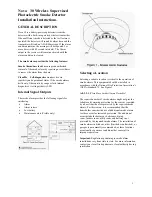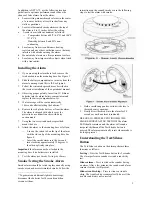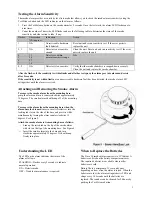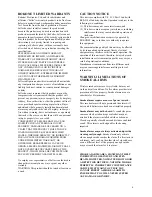
1
Nova
™
30 Wireless Supervised
Photoelectric Smoke Detector
Installation Instructions
GENERAL DESCRIPTION
Nova 30 is a battery-powered photoelectric smoke
detector with a built-in supervised wireless transmitter.
When sufficient smoke is detected or the test feature is
operated, the detector will sound its alarm horn and the
transmitter will send an ALARM message. If the alarm
condition remains, the message will be repeated 2 or
more times (with 65 second intervals). The Alarm
output in the receiver will remain activated until the
alarm condition is cleared.
The smoke alarm provides the following features:
Smoke Alarm/base lock
discourages unauthorized
removal of the smoke alarm by requiring a screwdriver
to remove the alarm from the base.
CleanMe™ Self-diagnostics
monitors its own
sensitivity and operational status. If the smoke alarms
drifts out of the sensitivity range or fails internal
diagnostics, it extinguishes its LED
Internal Signal Outputs
The smoke alarm provides the following signals for
interfacing:
•
Alarm
•
Alarm restore
•
Low battery
•
Maintenance alert (Visible only)
Selecting a Location
Selecting a suitable location is critical to the operation of
smoke alarms. This equipment should be installed in
accordance with the National Fire Protection Association’s
(NFPA) Standard 72. See Figure 2.
A-8-1.2.1.C
Are
More Smoke Alarms Desirable?
The required number of smoke alarms might not provide
reliable early warning protection for those areas separated
by a door from the areas protected by the required smoke
alarms. For this reason, it is recommended that the
householder consider the use of additional smoke alarms
for those areas for increased protection. The additional
areas include the basement, bedrooms, dining
room, furnace room, utility room, and hallways not
protected by the required smoke alarms. The installation of
smoke alarms in kitchens, attics (finished or unfinished), or
garages is not normally recommended, as these locations
occasionally experience conditions that can result in
improper operation.
Important:
Regulations pertaining to smoke alarm
installations vary from state to state. For more information,
contact your local fire department or local authority having
jurisdiction.

























